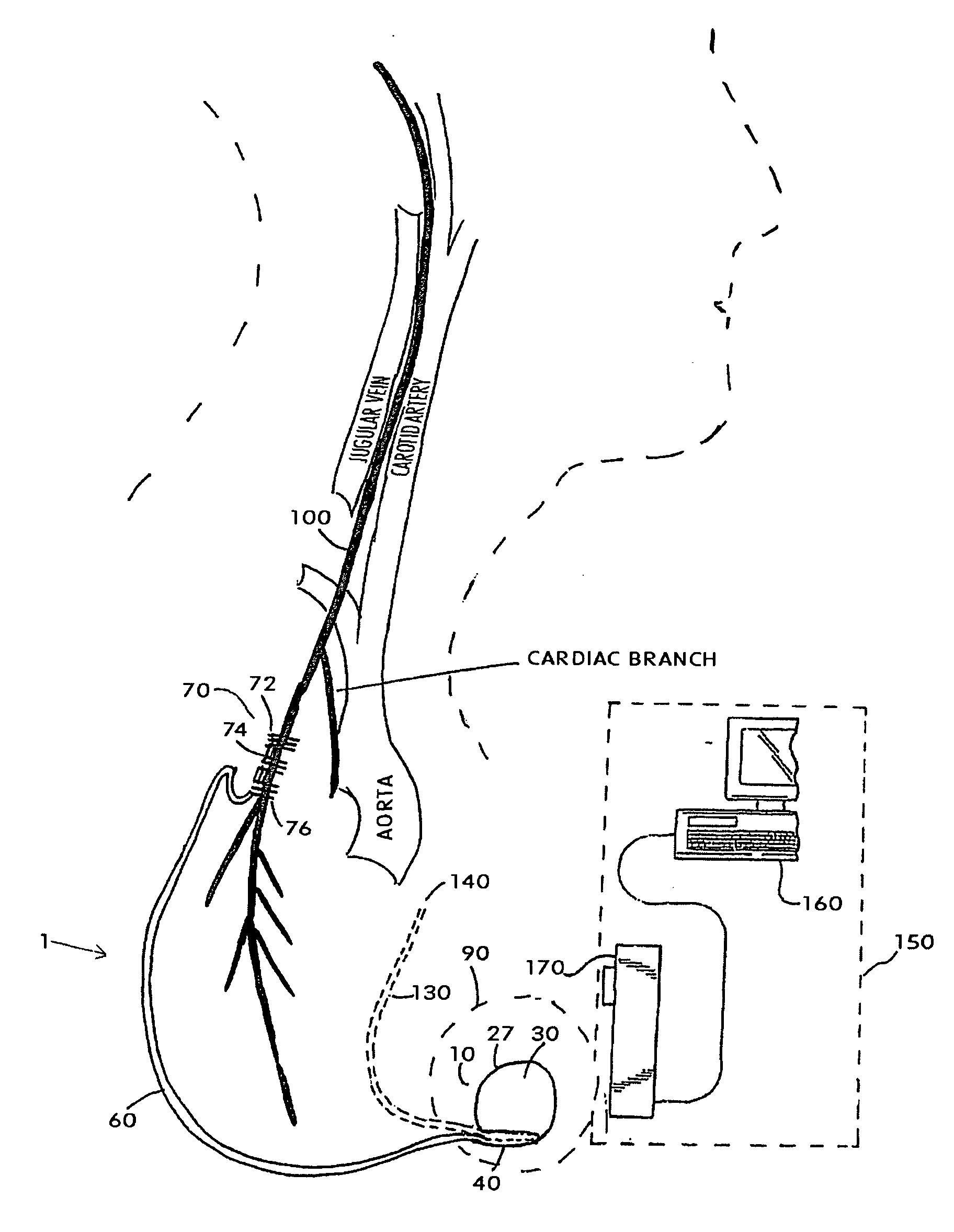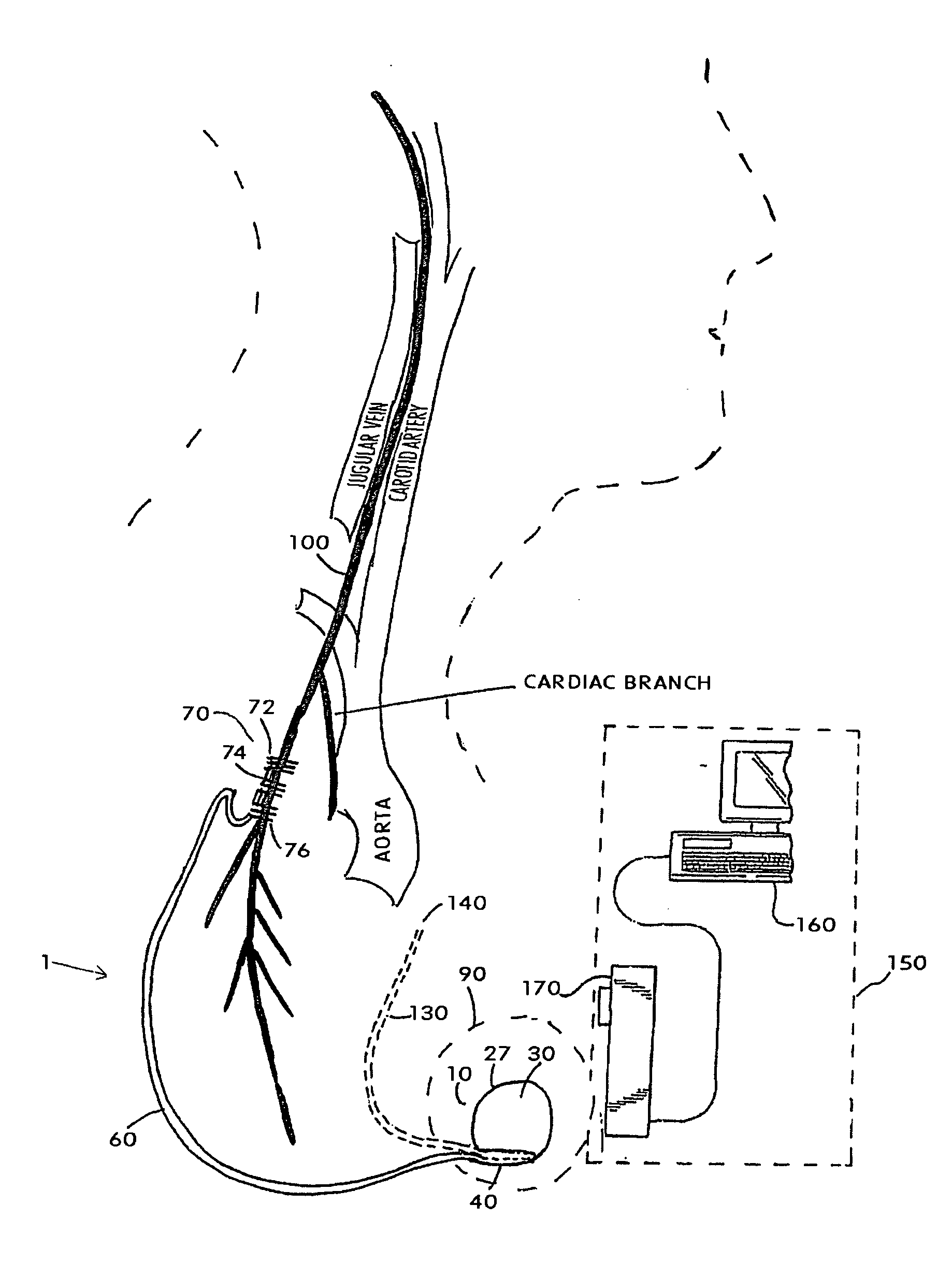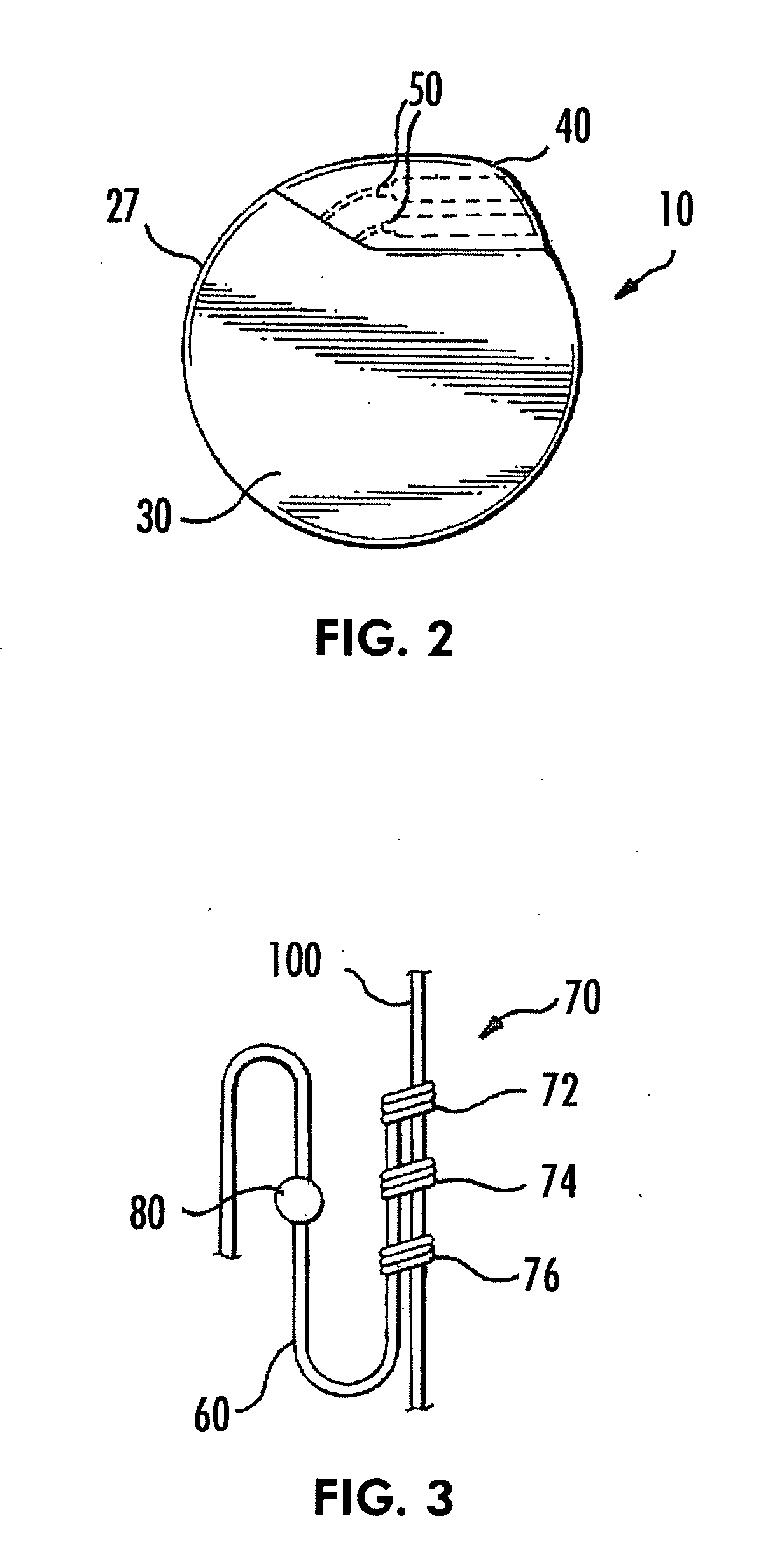Selective nerve stimulation for the treatment of angina pectoris
a nerve stimulation and selective technology, applied in electrotherapy, therapy, etc., can solve the problems affecting the onset of pain, and inability to control the electrical activity of the nerve, so as to reduce the risk of inducing bradyarrhythmia in the process, and reduce the risk of inability to achieve the effect of reducing blood pressure or slowing the heart rate or reducing blood pressur
- Summary
- Abstract
- Description
- Claims
- Application Information
AI Technical Summary
Benefits of technology
Problems solved by technology
Method used
Image
Examples
Embodiment Construction
[0015] A new, improved way to treat angina pectoris (“angina”) is provided which focuses specifically on dilating a coronary artery by selective stimulation of a cranial nerve, rather than on slowing the heart rate orreducing blood pressure. The new method makes it possible to avoid some of the undesirable side effects that have characterized known treatments, such as drug therapy. More specifically, cranial nerve stimulation, preferably left and / or right vagus nerve stimulation, is applied to selectively and controllably modulate the nerve's electrical activity so as to alleviate or deter the onsetof pain associated with angina pectoris.
[0016] Accordingly, there is provided a method of treating angina pectoris in a patient in need thereof The method generally comprises coupling an electrode to a cranial nerve of the patient at a selected site on the nerve, and then applying at least one therapeutic electrical signal to the electrode. The electrical signal is provided so as to dila...
PUM
 Login to View More
Login to View More Abstract
Description
Claims
Application Information
 Login to View More
Login to View More - R&D
- Intellectual Property
- Life Sciences
- Materials
- Tech Scout
- Unparalleled Data Quality
- Higher Quality Content
- 60% Fewer Hallucinations
Browse by: Latest US Patents, China's latest patents, Technical Efficacy Thesaurus, Application Domain, Technology Topic, Popular Technical Reports.
© 2025 PatSnap. All rights reserved.Legal|Privacy policy|Modern Slavery Act Transparency Statement|Sitemap|About US| Contact US: help@patsnap.com



